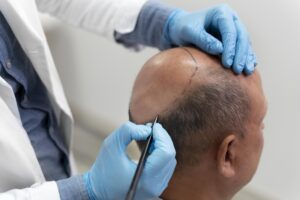Web design is the process of creating and organizing the visual and functional aspects of websites to ensure they are aesthetically pleasing, user-friendly, and effective. It involves elements such as layout, color schemes, typography, graphics, and interactive features, all aimed at providing a seamless user experience across various devices. Web design also encompasses user interface (UI) and user experience (UX) design, ensuring the site is intuitive and accessible. Additionally, it includes technical aspects like HTML, CSS, and JavaScript, along with SEO practices to enhance visibility and performance.

Major Types Of Web Design
1. Static Web Design
- Description: Websites with fixed content that doesn’t change unless manually updated.
- Use Case: Suitable for small sites with limited content updates, like portfolios or informational sites.
2. Dynamic Web Design
- Description: Websites that display different content and interactive features based on user interactions or other factors.
- Use Case: Common for blogs, e-commerce sites, and social media platforms where content is frequently updated.
3. Responsive Web Design
- Description: Websites that adapt their layout and content to fit different screen sizes and devices.
- Use Case: Essential for providing a consistent user experience across desktops, tablets, and smartphones.
4. Adaptive Web Design
- Description: Websites that use multiple fixed layouts tailored to specific screen sizes, selecting the most appropriate layout for the device.
- Use Case: Useful for optimizing performance and user experience on specific device categories.
5. E-commerce Web Design
- Description: Websites specifically designed for online shopping, with features like product catalogs, shopping carts, and payment gateways.
- Use Case: Ideal for businesses selling products or services online.
6. Single Page Design
- Description: Websites that consist of a single long-scrolling page, with navigation links that scroll to different sections of the page.
- Use Case: Great for portfolios, landing pages, and small business sites where simplicity and directness are key.
7. CMS-Based Web Design
- Description: Websites built using Content Management Systems (CMS) like WordPress, Joomla, or Drupal, allowing for easy content management and updates.
- Use Case: Suitable for blogs, news sites, and any website requiring frequent content updates.
8. Portfolio Web Design
- Description: Websites designed to showcase creative work, such as art, photography, or design projects.
- Use Case: Ideal for artists, designers, photographers, and other creative professionals.
9. Corporate Web Design
- Description: Professional websites for businesses and organizations, focusing on providing information about services, contact details, and company background.
- Use Case: Suitable for corporate entities, agencies, and businesses looking to establish an online presence.
10. Blog/Weblog Design
- Description: Websites designed for regularly updated content, such as articles, posts, and multimedia.
- Use Case: Perfect for personal bloggers, writers, and content-driven sites.
Costing Of Web Design
The cost of web design can vary widely depending on several factors, including the complexity of the website, the level of customization required, and the experience of the designer or agency. For a simple, static website, costs can range from $500 to $5,000. More complex websites, such as e-commerce sites or those with dynamic content, can cost between $5,000 and $20,000. High-end, custom websites developed by experienced agencies can exceed $20,000. Additional costs may include ongoing maintenance, updates, and hosting services.
Benefits Of Web Design
Web design offers numerous benefits, essential for creating a compelling online presence. A well-designed website enhances user experience by providing easy navigation, fast load times, and mobile responsiveness, which increases visitor engagement and satisfaction. It also establishes credibility and professionalism, making a positive first impression on potential customers. Effective web design incorporates SEO best practices, improving search engine rankings and driving more traffic to the site. Additionally, it enables seamless integration of brand identity, fostering trust and loyalty among users. Overall, quality web design is crucial for attracting, retaining, and converting visitors, ultimately contributing to business growth and success.


